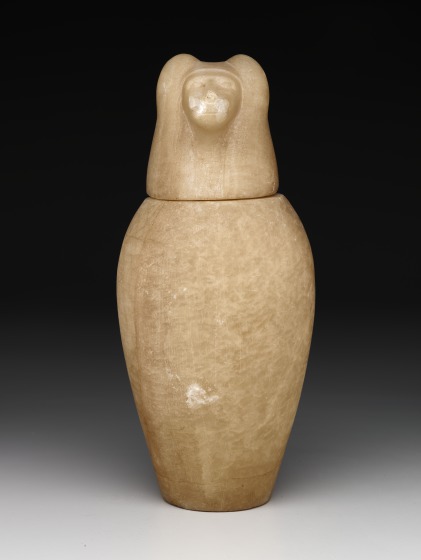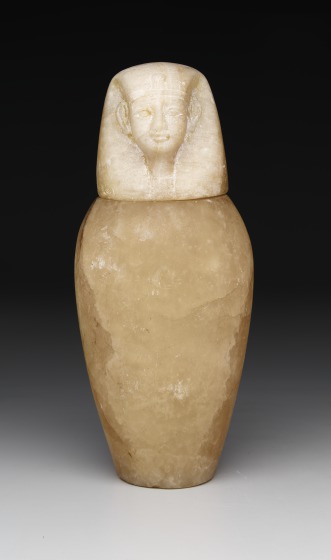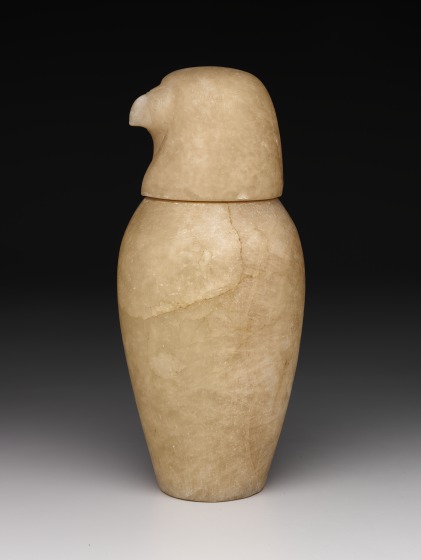For thousands of years, cultures all around the world have practiced mummification to preserve departed loved ones and revered leaders along with objects that celebrated their life and prepared them for the afterlife. Check out these spook-tacular objects from the DMA’s collection related to mummification and join us on Saturday, October 29, at 2:00 p.m. for Mummies Unwrapped with DMA curators Dr. Anne Bromberg and Dr. Kimberly Jones.
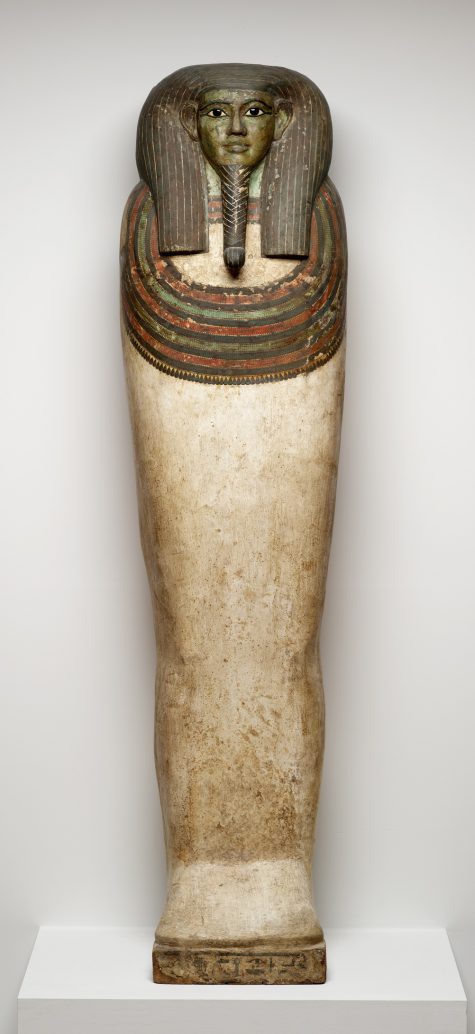
Coffin of Horankh, Egypt, Thebes, c. 700 B.C.E., wood, gesso, paint, obsidian, calicite, and bronze, Dallas Museum of Art, the Cecil and Ida Green Acquisition Fund, 1994.184
For the ancient Egyptians, it was necessary to preserve the body so that the spirit could live on in the afterlife. Cartonnages, or coffins, were often highly personalized with a likeness of the owner and his or her name. Some include stories about the gods or even protection spells for specific parts of the owner’s body.
- Canopic Jars 20.2002.18-21
- Canopic Jars 20.2002.18-21
- Canopic Jars 20.2002.18-21
- Canopic Jars 20.2002.18-21
Canopic jars each held one of the mummified organs of a deceased person—the heart, lungs, intestines, and stomach. The four figures carved into the lids of the jars served as protectors for the organs inside. Since the heart was believed to be integral to the final judgment of a person’s soul, it was one of the most important organs to preserve.
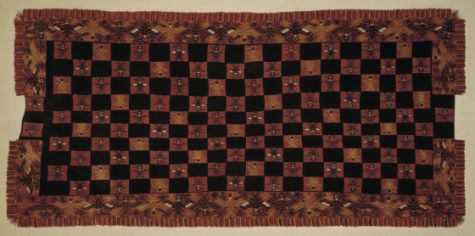
Mantle with condors, Peru, South Coast, 300–100 B.C.E., camelid fiber, Dallas Museum of Art, The Eugene and Margaret McDermott Art Fund, Inc., in memory of John O’Boyle, 1972.4.McD
This mantle was part of a funerary bundle from a Paracas burial. The deceased person, posed in a fetal position, would be wrapped in up to dozens of layers of handwoven garments embroidered with intricate designs—in this case condors with outspread wings.
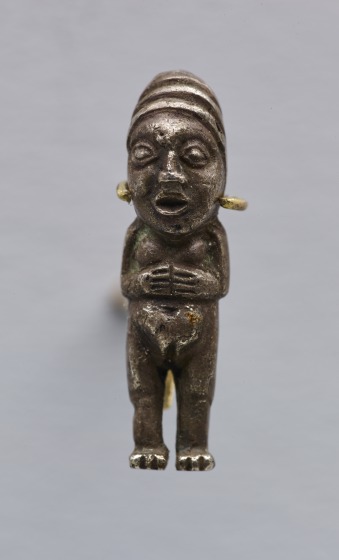
Standing female figure, Peru, Inka (Inca), 1400–1540, silver, Dallas Museum of Art, collection of Andrew D. Christensen, gift of J. D. Christensen, 1983.633
This small figurine is similar to those used in an Inca sacrificial ritual known as capacocha. The preserved remains of young men and women who participated in capacocha rituals have been found in the Andean peaks clothed in fine textiles and accompanied by both human and animal figurines.
Jessie Frazier is the Manager of Adult Programming at the Dallas Museum of Art.
